"From a Buddhist sculptor and Miyadaiku (Imperial carpenter) to maker of Buddhist altars and fittings.
Turn Buddhist statues and fittings into art, with sublime talent."
Tell me about the beginnings and the history of Akazawa Choyo.
The history of our company goes back a long time, and is said to have started in the Muromachi Period. It was originally a family carpentry business that operated in Kyoto.
In the Edo Period (1805), we moved to Edo on orders from the Tokugawa shogunate, and were put in charge of the restorative construction of the Toshogu Shrine at the Nikko Tosho-gu.
We also began making Buddhist altar fittings in Kyobashi, Chuo Ward, during the Meiji Period, and then moved to Tawaramachi, Taito Ward, where we operate to this day.
My great grandfather, Asajiro Akazawa, was a sculptor who graduated from the Tokyo School of the Arts (currently the Tokyo University of the Arts), and studied under the sculptor, Takamura Koun. He was skilled at carving fine details and his talent elevated Buddhist (miniature) altars and fittings into an art. His creative vision become the foundation of the way we work today.
Asajiro, being born in the Meiji Period, was filled with entrepreneurial spirit, and proactively took in Western culture and used his interactions with cultured individuals from various fields in his work.
The corporate culture at Akazawa Choyo, which is highly entrepreneurial, retains Asajiro's spirit with regards to his work.
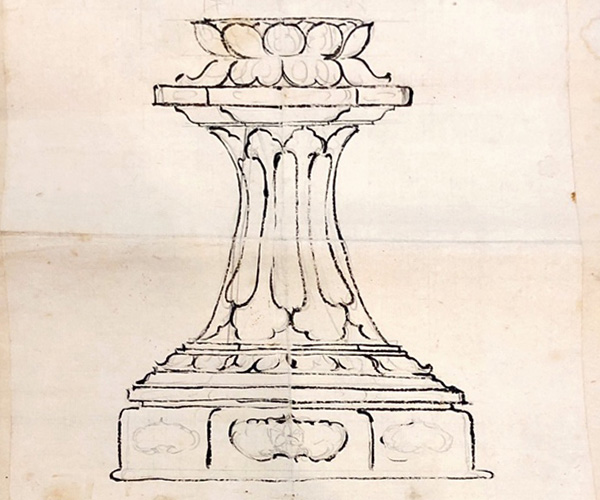
Sketch of a Buddhist Altar Fitting by Sculptor Chojiro Akazawa
"We have progressed into many nations around the world.
We will not forget to be thankful to our partners, and will bring our contribution to the world through our altars."
You are very proactive in exporting overseas, which is rare for a company selling Buddhist altars and fittings.
Is there anything specific you are aiming for?
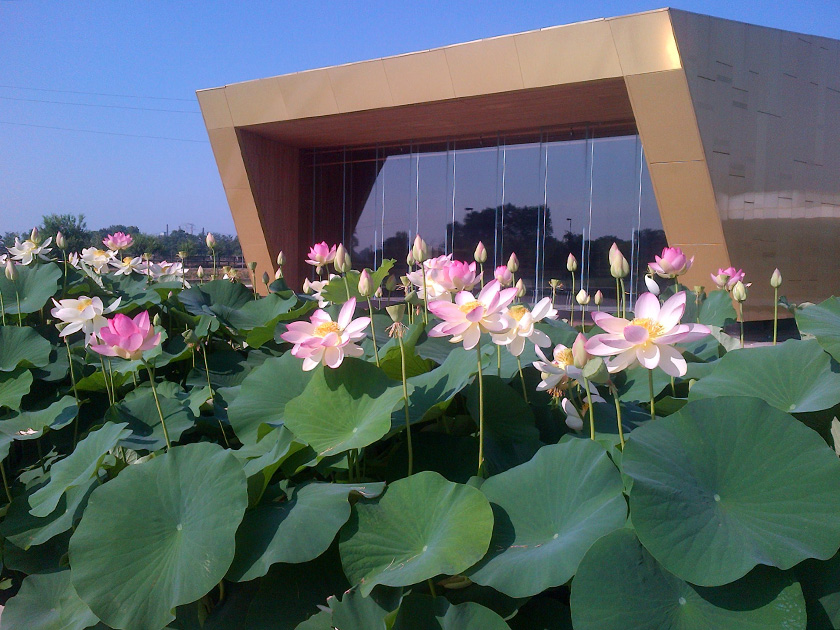
A place of worship in Europe
The first part of our corporate philosophy is "never forget the spirit of thankfulness". Especially we are thankful for our foreign patrons and the parties relating to them. We will strive to manufacture and trade high quality goods.
The second is "never forget to contribute to world peace". When you make something, you should not do it just to "make it", you must always place importance on "why" you are making it, and "what" it will contribute to.
We offer religious goods. I believe that one of the goals of all religion is to realize peace. By manufacturing and selling goods made with such a belief both domestically and abroad, we believe that we can contribute to world peace. I would like to continue striving to make things with such a mission.
The third part is that we must strive to create things in a way that respects the culture and landscape of every region we operate in. Demand for manufacturing that respects the local culture and landscape is increasing abroad by the year. When we accept these requests, we do not say that we can't do it because we never did it in Japan. We work to understand and respect the client's culture use all of our knowledge and technique to make it a reality.
Has there been anything especially memorable in your work abroad?
There are a lot of things that I am thankful for, but I would like to speak about traditional techniques. In some countries of Europe, the craftsmen had a lot a pride about their skills, and were suspicious of introducing Japanese products. When we went there to put together our products, a lot of people gathered to look at the methodology and mechanics behind it.
When it was completed, they mentioned that they could not do the same themselves, and that Japan's technology is amazing. The impression I got there has remained with me. I got a renewed sense of pride in Japan's traditional techniques, by having what I had taken for granted to me pointed out in a foreign nation.
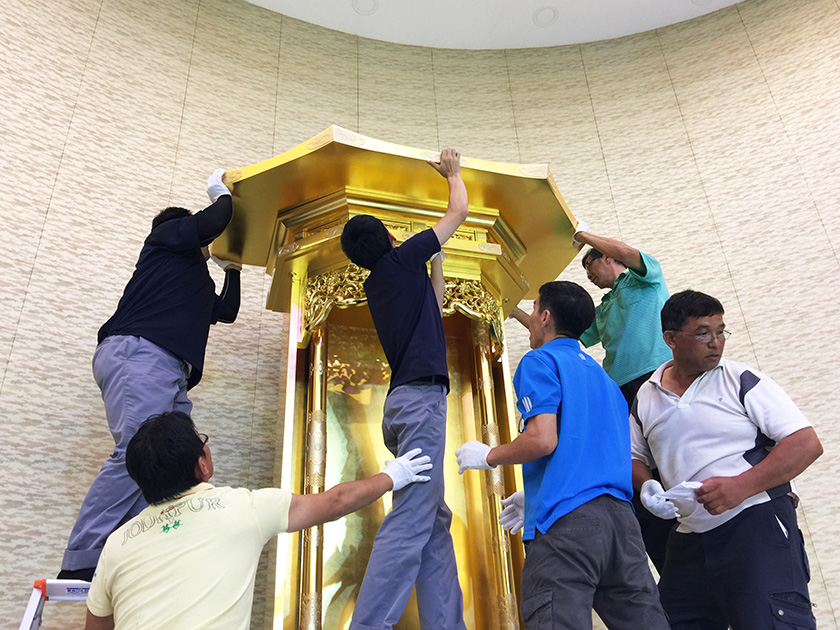
Fitting assembled on-site overseas
"An establishment that co-exists with the environment.
We work a job that values trees, and as a result values the environment."
You are also involved in social movements such as forestation.
Our work involves using a lot of wood, and so we wanted to protect trees, and are currently supporting a forestation project. Also, to share how important trees are with our staff, I have them participate in forestation tours, and help them feel how important trees are through our work.
Aside from forestation, we are also working on adding LEDs to our altars and fittings. Whenever I speak with someone from abroad, especially Europeans, I feel that they are very keen on environmental protection and renewable goods. People are beginning to become more sensitive to these subjects in Japan as well, and we are going to continue to strengthen our efforts.
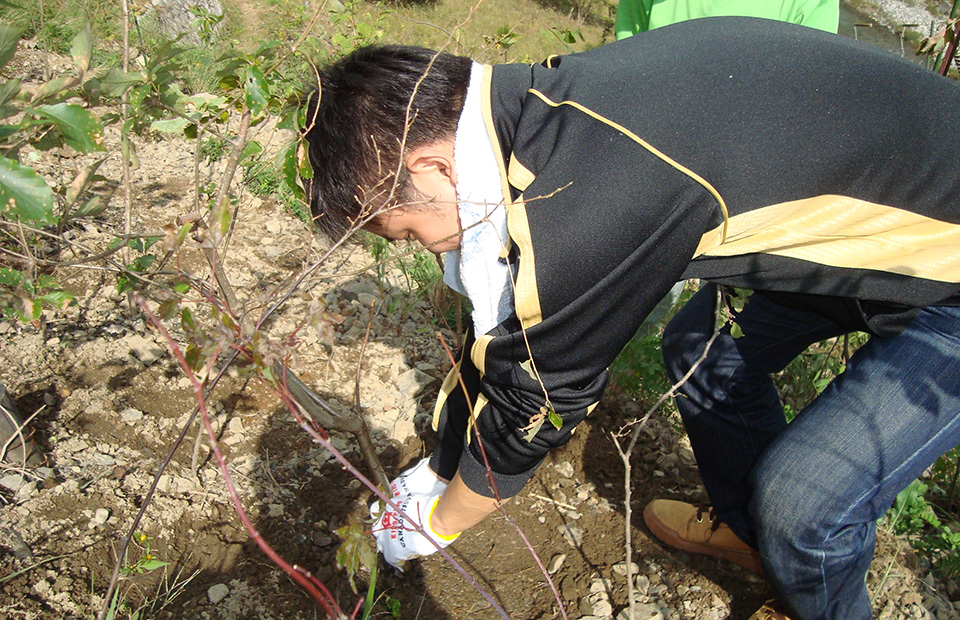
Reforestation performed by employees
"We act as a generational enterprise moving to create the future.
Stepping outside of altars and fittings, and creating something new."
I've heard that you are working on your new business, a1805, which makes room fragrances and bells.
Along with the changes in the sensibilities toward altars and fittings in Japan, I feel that it's time for a paradigm shift. It's also getting harder find and train successors for our craftsmen, and even to maintain our current craftsmanship level.
Under conditions like these, we began to work to evolve these important Japanese techniques, and set out from the world of altars and fittings.
I place a lot of value in these words by Dr. Arnold Joseph Toynbee, a world history researcher: "Challenge and response".
For example, the people of ancient Egypt developed to the point that they could build the pyramids and stave off decline, by moving across the desert along the Nile River. The history of the development of mankind contains many instances of "responses" to "challenges" by the natural environment.
We are currently facing a time of change in the world of Buddhist altars, to find our response and move into the future. The name "a1805" takes the first letter of "Asajiro", and the date (1805) that we moved from Kyoto to Edo.
We have a history of doing creative work, such as carpentry and sculpture. Buddhist altars and fittings are the result of a coming together of techniques from various fields. It contains countless traditional methods. The concept behind this project is move beyond focusing solely on domestic altar techniques, make new products and in new fields and designs, offer them to people all over the world, and create an environment to maintain and succeed those who make them.
Additionally, while a1805 is a new project, it is also an opportunity to bring us back to our creative roots and have a fresh look at our long history, and further develop our altar and fitting business.
We will give thanks to the foundations left to us over the past 200 years by our forefathers, create new things, and respond to the challenges of the environment. I would like to use this opportunity to create new value, as we cooperate with our highly skilled craftsmen and other industry professionals as a multi-generational enterprise.
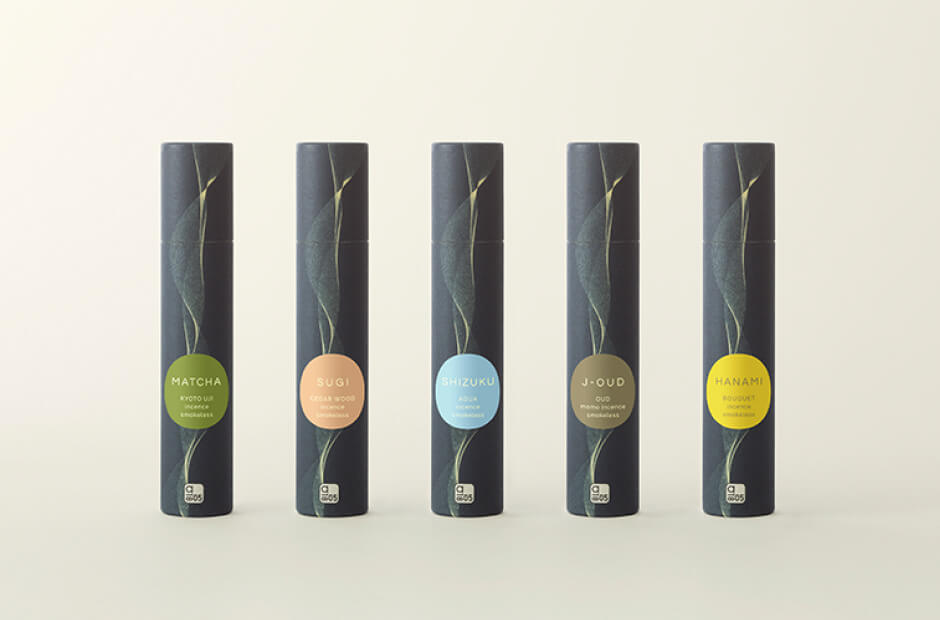
Stick incense offered as part of the a1805 project
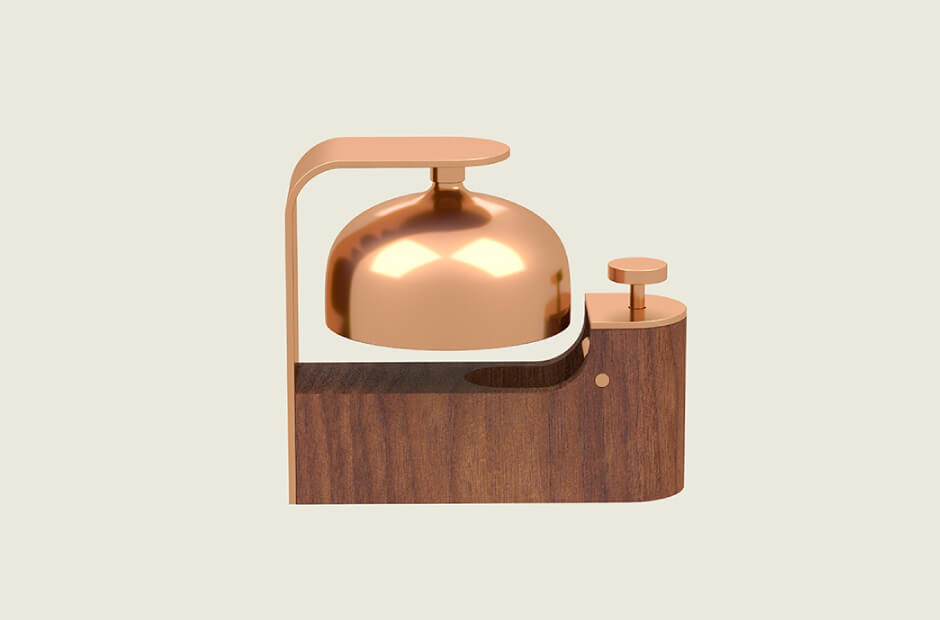
New product KEEN showcases the craftsmanship involved in creating bells for buddhist ceremonies
I hear you've began to exhibit a1805's new products domestically and abroad.
They were popular in both cases, especially at the Maison Objet exhibit in France, where we received a much bigger response than we expected.
I received a strong impression that, if we are able to get people overseas to see our history and traditional techniques, and altar designs and expressions with these techniques, we will find demand with many people.
We have actually received orders from people in Europe, and have had a bright start. I would like to move on to present Japan's craftsmanship with the entire world as our market.
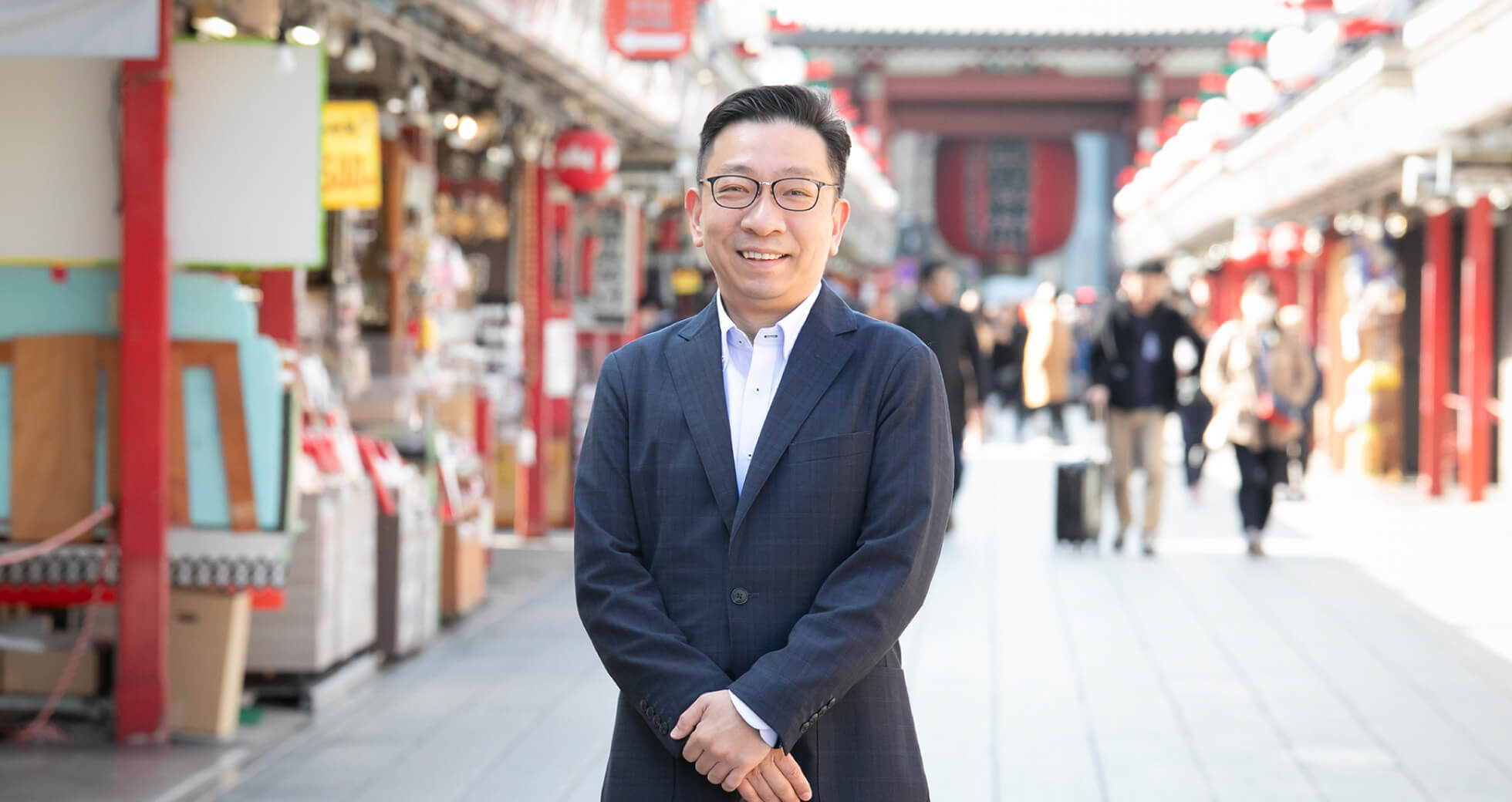
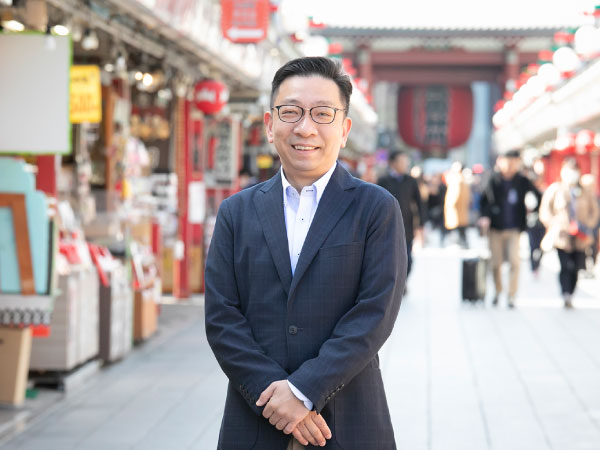
At Asakusa’s Nakamise shopping street, near our headquarters
